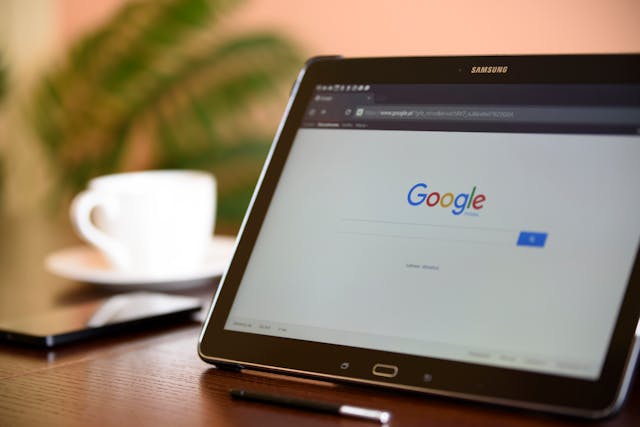Running a successful lead generation campaign often comes down to picking the right platform. Google Ads and Instagram both offer incredible potential but cater to different behaviors and intents. Choosing between them isn’t about finding the “better” platform—it’s about aligning your strategy with your audience’s needs and the type of leads you want to attract.
Audience Intent and Behavior
Google Ads thrives on user intent. When someone types a query into Google, they’re actively searching for solutions. Whether it’s “best accounting software for small businesses” or “how to repair a leaky faucet,” these queries represent a clear problem or goal. The platform is a match made for businesses looking to connect with prospects already in a decision-making mindset.
Instagram, on the other hand, excels at capturing attention. Scrolling through their feed or stories, users aren’t necessarily looking for anything specific, but the right ad at the right moment can ignite interest. For brands in visual or lifestyle niches, Instagram’s immersive format can spark curiosity and build relationships before a prospect even knows they need your product or service.
Budget and ROI Expectations
Google Ads operates as a bidding war for keywords. The more competitive the keyword, the higher the cost. Industries like law, finance, and healthcare face some of the steepest competition, with keywords that can easily cost hundreds of dollars per click. That said, the quality of the traffic often justifies the cost, especially when those clicks turn into high-value conversions.

Instagram ads can stretch a smaller budget further, particularly when targeting broad demographics or running brand awareness campaigns. While the platform may deliver lower intent traffic, creative visuals paired with compelling offers can drive excellent engagement rates. The key is understanding that the ROI timeline might look different—Google tends to deliver more immediate results, while Instagram often plays a longer game, nurturing leads before they convert.
Creativity vs. Strategy
Instagram is a playground for creativity. From carousel ads to short-form video content, the platform rewards brands that know how to tell a story visually. Businesses that succeed here invest in eye-catching imagery and engaging storytelling that feels native to the platform. It’s not just about selling; it’s about creating an experience that resonates with your target audience.
Google Ads, however, is rooted in precision. Success here hinges on thorough keyword research, well-crafted ad copy, and a finely tuned landing page. Creativity has its place in writing ad copy that stands out, but it’s the strategic side—analyzing search trends, optimizing for quality scores, and refining bids—that drives campaigns forward.
Lead Quality and Funnel Placement
Leads from Google Ads often represent a later stage in the funnel. These users have actively sought out solutions, meaning they’re closer to making a purchase decision. If your business relies on high-intent leads, this platform delivers them more consistently.
Instagram, meanwhile, captures attention higher in the funnel. While these leads might require more nurturing, they can be an excellent fit for businesses with strong email campaigns, remarketing strategies, or an extended sales cycle. If your brand thrives on building long-term relationships or educating your audience before a purchase, Instagram provides the tools to make that happen.
Ad Formats and Targeting Capabilities
Google Ads offers unmatched targeting precision. You can filter by keyword, geographic location, device, time of day, and more. The ability to refine your audience ensures that your ads reach the right people at the right moment. This laser-focused approach works well for businesses with a clear profile of their ideal customer.
Instagram, powered by Meta’s advanced targeting engine, shines when it comes to demographic and interest-based targeting. It’s the go-to for brands looking to create awareness among specific groups, whether defined by age, hobbies, or online behavior. Pairing this targeting with Instagram’s ad formats—like Reels, Stories, or interactive polls—opens up opportunities for engagement that Google Ads simply doesn’t offer.
Industry Considerations
Certain industries find a natural home on one platform or the other. Retail and fashion brands, for instance, often see tremendous results on Instagram, where product visuals and influencer partnerships can spark buying decisions. On the flip side, professional services like law firms or SaaS companies often lean toward Google Ads, where high-intent keywords lead to qualified leads.

That’s not to say there’s no crossover. Many successful campaigns blend both platforms, leveraging Google’s search ads to capture active interest while running Instagram ads to build brand awareness and retarget prospects.
Choosing the Right Fit
If your business needs quick results and has a clear conversion path, Google Ads might be the better choice. But if you’re building a brand that thrives on storytelling and visual appeal, Instagram could be the perfect stage for showcasing what makes you unique.
Ultimately, the decision isn’t binary. Both platforms bring unique strengths to the table, and the best campaigns often combine them. Use Google Ads to capitalize on search intent while running Instagram ads to stay top of mind with your audience. That combination can create a powerful synergy, driving leads at every stage of the buyer’s journey.
The secret lies in knowing your audience, defining your goals, and tailoring your strategy to each platform’s strengths. With the right approach, both can be game-changers for your lead generation efforts.